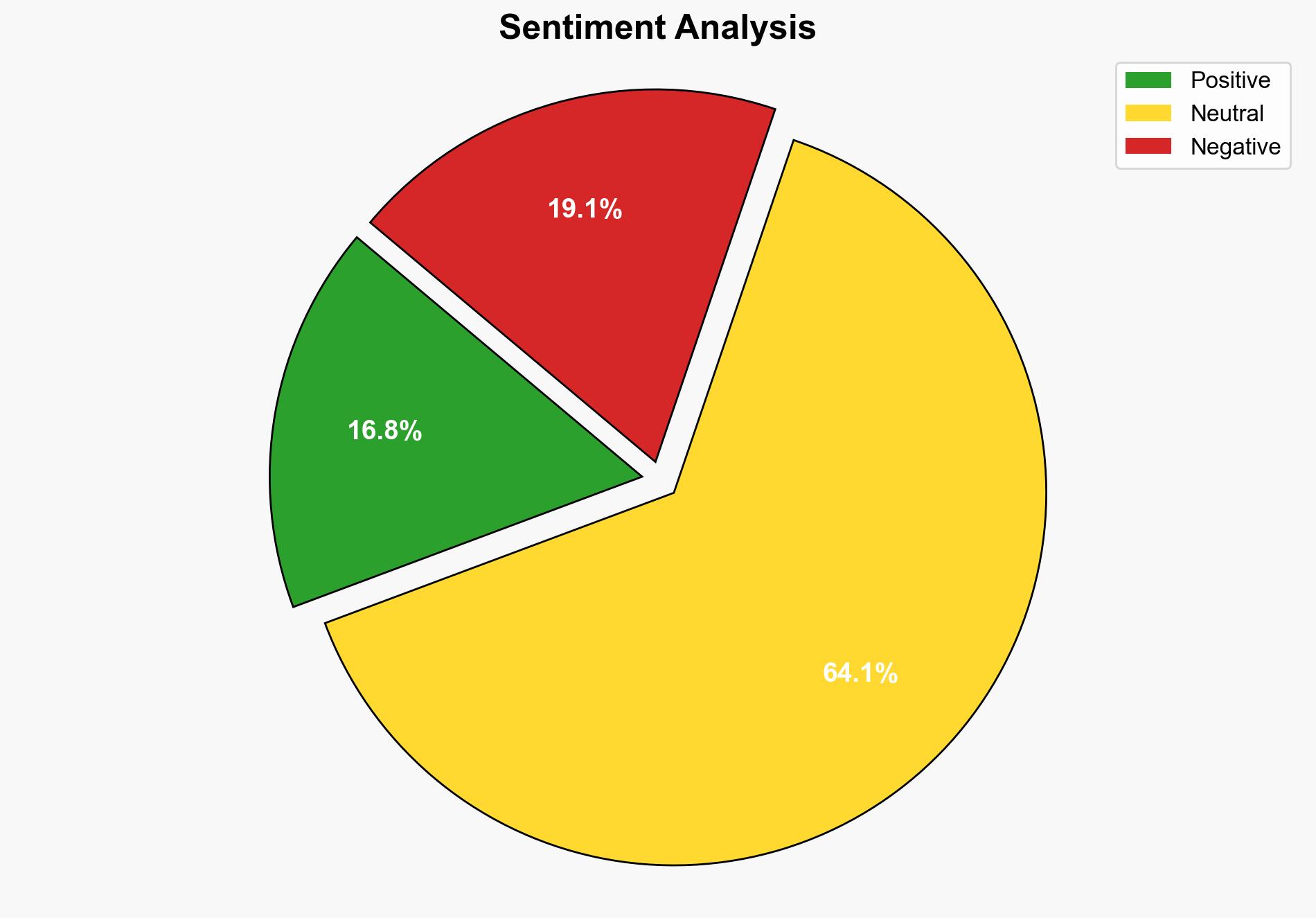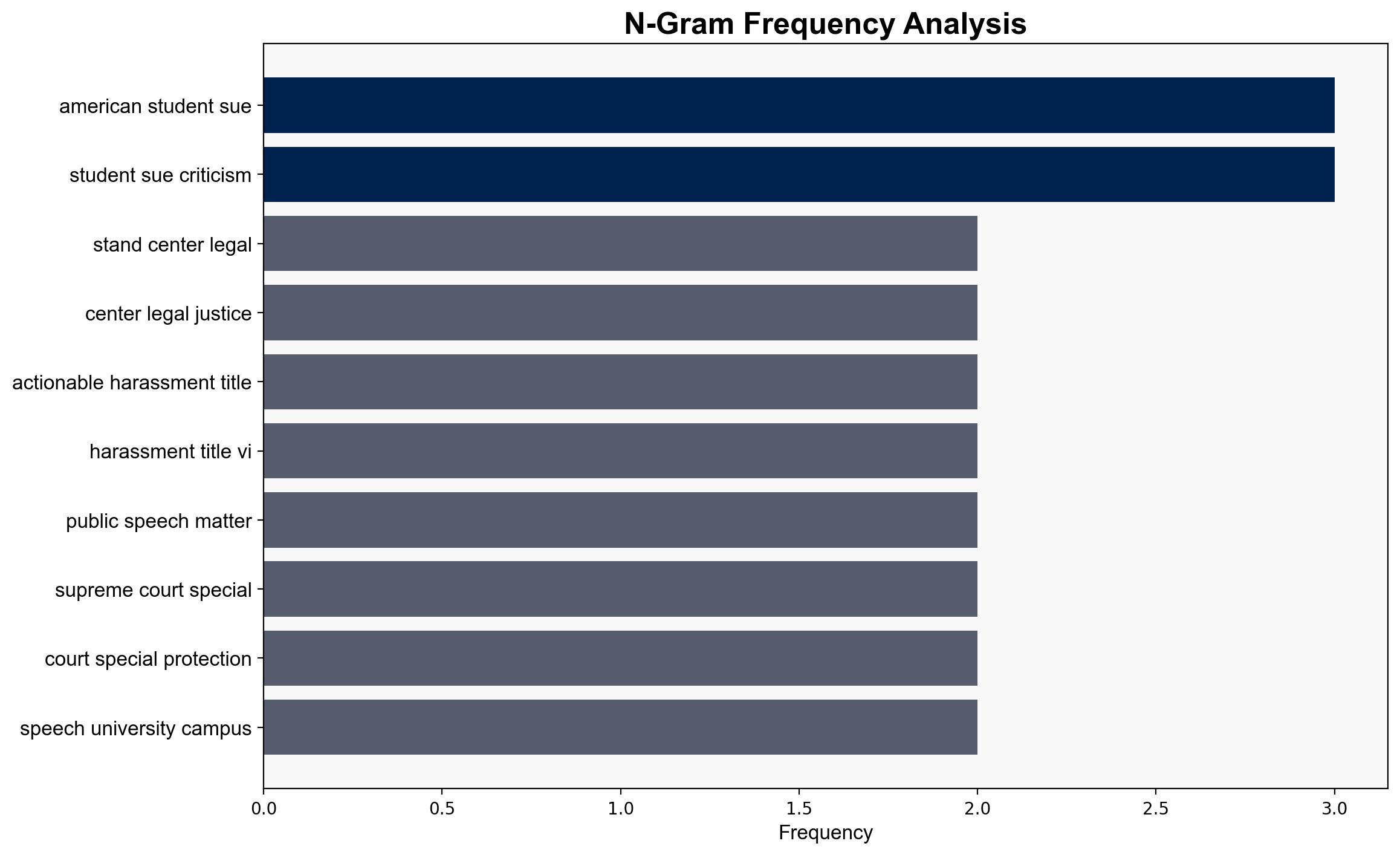First Circuit Judges Strike down Israel Lobby Suit against MIT for Permitting Gaza Protests – Juancole.com
Published on: 2025-10-26
Intelligence Report: First Circuit Judges Strike down Israel Lobby Suit against MIT for Permitting Gaza Protests – Juancole.com
1. BLUF (Bottom Line Up Front)
The court’s decision to dismiss the lawsuit against MIT for allowing Gaza protests is primarily supported by the interpretation that the protests are protected under free speech rights. The alternative hypothesis that the protests constitute discrimination against Jewish students is less supported. Confidence in this assessment is moderate due to potential biases and assumptions in the legal interpretations. Recommended action is to monitor similar cases for precedent-setting implications and assess the impact on campus policies nationwide.
2. Competing Hypotheses
1. **Hypothesis A**: The court’s decision is based on the interpretation that the protests are a form of protected speech under the First Amendment, and do not constitute discrimination against Jewish students.
2. **Hypothesis B**: The protests are viewed as discriminatory actions against Jewish students, violating Title VI, and the court’s decision overlooks this aspect.
Using ACH 2.0, Hypothesis A is better supported by the judges’ emphasis on free speech rights and the lack of evidence for actionable harassment under Title VI. Hypothesis B lacks substantial evidence and is weakened by the court’s dismissal of the analogy to sexual harassment under Title IX.
3. Key Assumptions and Red Flags
– **Assumptions**: It is assumed that criticism of Israeli government policy is distinct from antisemitism. The judges assume that the protests do not rise to the level of harassment.
– **Red Flags**: Potential bias in interpreting free speech versus discrimination. The lack of detailed evidence on the impact of protests on Jewish students raises concerns about the thoroughness of the evaluation.
– **Blind Spots**: The broader context of rising antisemitism and its potential influence on campus dynamics is not fully explored.
4. Implications and Strategic Risks
– **Patterns**: The ruling may set a precedent for similar cases, influencing how universities handle protests and free speech issues.
– **Cascading Threats**: Potential escalation of tensions on campuses, leading to increased polarization and possible security incidents.
– **Economic and Geopolitical Dimensions**: Universities may face pressure from interest groups, impacting funding and international collaborations.
5. Recommendations and Outlook
- Monitor similar legal cases for trends and precedents that could affect university policies nationwide.
- Engage with university administrations to develop balanced policies that protect free speech while addressing discrimination concerns.
- Scenario Projections:
- Best Case: Universities successfully balance free speech and anti-discrimination policies, reducing campus tensions.
- Worst Case: Increased polarization leads to more legal challenges and campus unrest.
- Most Likely: Continued legal and social debates over the boundaries of free speech and discrimination on campuses.
6. Key Individuals and Entities
– William Kayatta
– Gustavo Gelpí
– William Smith
– StandWithUs Center for Legal Justice
– Massachusetts Institute of Technology (MIT)
7. Thematic Tags
national security threats, legal precedents, campus protests, free speech, antisemitism, discrimination




